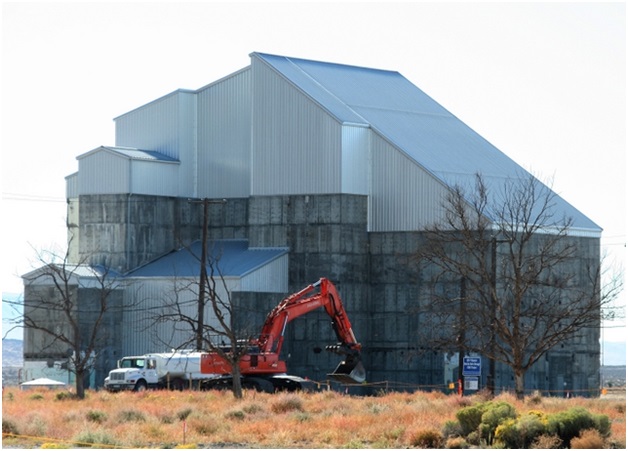The United States developed and manufactured nuclear weapons at the Hanford Nuclear Reservation in South Central Washington State from 1942 to 1987. The B Reactor, the first full sized plutonium reactor ever built, generated plutonium for the test of the first nuclear bomb and the bomb that was dropped on Nagasaki, Japan at the end of World War II. Eventually a total of nine nuclear reactors and five plutonium processing facilities. The early safety procedures and waste disposal procedures were not sufficient. Radioactive materials were released into the atmosphere and the Columbia River and are still threatening the ecosystem and the population in the vicinity of the Reservation. After decades of plutonium manufacture, fifty three million gallons of liquid high level nuclear waste, twenty five million cubic feet of solid radioactive waste and two hundred square miles of ground water contamination were left behind. This represents two-thirds of the volume of nuclear waste in the entire country. It is the most contaminated site in the U.S. and clean up efforts are still going on after twenty seven years.
Now the U.S. Department of Energy (DoE) has released a final draft of its proposed plan for the cleanup of the F Reactor and nearby ground. If the plan is adopted, it might serve as a template for the cleanup of the other eight plutonium production reactors along the Columbia at Hanford. The DoE has decided that the best approach for cleaning up the F Reactor is something called natural attenuation. This process includes biological processes that bind up buried radioactive materials, the dispersion of radioactive materials over a wider area reducing the level of contamination, the dilution of radioactive materials in the waters of the Columbia River and radioactive decay which will reduce the intensity of the radiation. The DoE say that allowing a natural reduction in the concentration of radioactive contaminants will not threaten human health or the environment. DoE says that the removal of two million tons of contaminated soil removed from the F Reactor site will reduce or eliminate any significant contribution to the radioactive plume in the Columbia River. The plan also has the benefit of being cheaper than other alternatives.
The claims being made for the new plan include the following. The strontium 90 at the F Reactor site would take one hundred and fifty years to reach a safe level. The nitrates produced by animals used in tests would be at safe levels in eighty years. Tricloroethene, one of the first chemicals outlawed by the EPA, would be safe in ten years and chromium would be safe in thirty five years. New monitoring wells would have to be drilled to track the progress of the natural processes. In all, the estimated cost of the DoE plan would be about thirty million dollars.
The Hanford Advisory Board composed of a wide cross-section of local government, environmental, health and worker concerns is not impressed with the DoE plan for Reactor F. They are concerned that the DoE plan will not be "dependable, protective, defensible or well supported." They would prefer that DoE consider a plan to pump water from the entire twenty six thousand acre area currently generating a nitrate plume. This plan would reduce the nitrates in twenty five years, the chromium in ten years and the tricloroethene in ten years. It would cost an estimated one hundred and ninety four million dollars. The plan would also inject chemicals into the soil to bind the strontium so it will not leach out into the Columbia.
Given the record of incompetence, lying, chronically low estimates of eventual clean up costs and claims of safety that are unfounded on the part of DoE in the past at Hanford, I would prefer that they seriously consider the plan proposed by the Advisory Board.
Reactor F:
